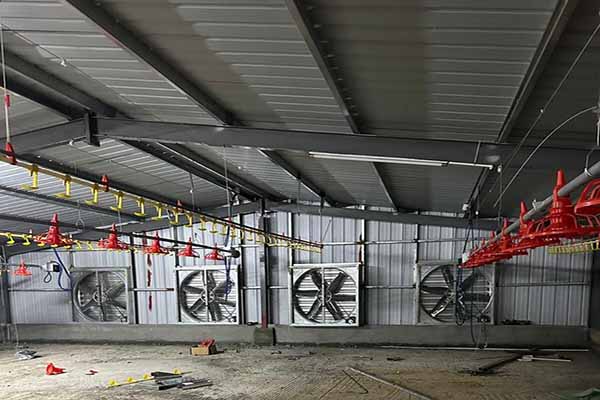Long-term Cost Analysis of Automation Equipment for Uganda Chicken Farms
Time : 2025-04-26
As the demand for chicken products in Uganda continues to grow, so does the need for modern and efficient farming techniques. One of the key elements of a successful chicken farm is the use of automation equipment. In this article, we will delve into the long-term cost analysis of automation equipment for Uganda chicken farms. We’ll explore the initial investment, ongoing maintenance, and the potential for savings over time. So, let’s jump in and see how this technology can impact your farm’s bottom line.
Introduction to Automation Equipment for Chicken Farms
Automation in chicken farming has come a long way from the days of manual feeding and watering. Today, modern automation equipment can take care of feeding, watering, monitoring health, and even adjusting the climate in the chicken houses. The technology can significantly improve the productivity and overall health of the flock.
Initial Investment Costs
When considering automation for your Uganda chicken farm, the first thing that comes to mind is the initial investment cost. This can include the cost of purchasing the equipment, installing it, and potentially hiring a specialist to set it up and train your staff.
1. Equipment Costs: The cost of automation equipment for chicken farms varies greatly depending on the size of the farm and the specific features you need. A basic system might cost a few thousand dollars, while a comprehensive solution can cost upwards of $100,000.
2. Installation Costs: The installation of the equipment can be relatively straightforward or complex, depending on your existing infrastructure. This can add anywhere from a few hundred to a few thousand dollars to the total cost.
3. Specialist Costs: If you decide to hire a specialist to install and train your staff, you can expect to pay a few thousand dollars for this service.
Ongoing Maintenance Costs
Once you’ve invested in automation equipment, the real test begins – how much will it cost to maintain over the long term?
1. Routine Maintenance: Regular maintenance is essential to ensure that the equipment operates efficiently. This might include changing batteries, cleaning sensors, and ensuring that all systems are functioning correctly. You can expect to spend a few hundred dollars per year on routine maintenance.
2. Replacement Parts: Over time, parts of the equipment may wear out and need to be replaced. This can vary significantly, depending on the brand and the equipment you’ve invested in. Budgeting a few thousand dollars per year for replacement parts is a reasonable estimate.
3. Software Updates: Some automation systems require software updates to remain compatible with your equipment and to access the latest features. While these updates are usually free, there may be a cost associated with technical support or consulting services to implement them.
Potential for Savings Over Time
While the initial and ongoing costs of automation equipment can seem daunting, there are significant savings to be had over time.
1. Increased Productivity: Automation can lead to higher productivity on your farm. With automated feeding, watering, and monitoring, you can free up your staff to focus on other important tasks, such as breeding and marketing.
2. Reduced Labor Costs: Automation can reduce your need for labor, as some tasks that were previously done by humans can now be automated. This can lead to significant savings in labor costs over time.
3. Improved Animal Health: Automation can lead to better animal health by ensuring that all birds receive the correct diet and environment. A healthier flock can result in fewer veterinary bills and a higher overall profit.
4. Energy Savings: Modern automation systems can also help you save on energy costs. By optimizing the use of heating, cooling, and lighting, you can reduce your electricity bill.
Conclusion
In conclusion, the long-term cost analysis of automation equipment for Uganda chicken farms shows that while there is an initial and ongoing investment, the potential for savings and increased productivity is significant. By automating certain aspects of your farm, you can improve the health and productivity of your flock, reduce labor costs, and potentially save on energy bills.
It’s important to consider the specific needs of your farm and budget when deciding whether to invest in automation. However, with the growing demand for chicken products in Uganda, investing in the latest technology can provide a competitive edge and a more sustainable future for your business.












